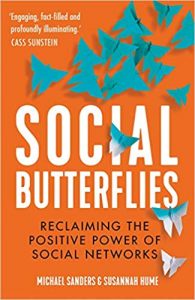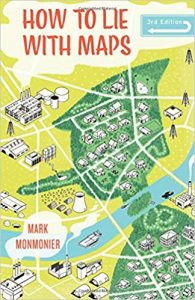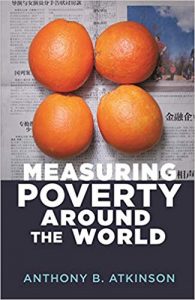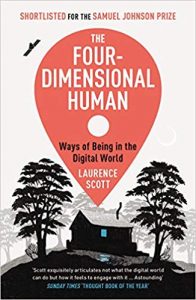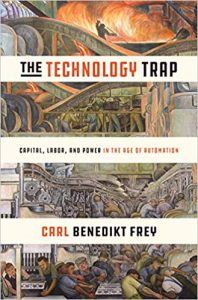When somebody is called a social butterfly, it isn’t usually a very positive evaluation. Social Butterflies: Reclaiming the Positive Power of Social Networks by Michael Sanders and Susannah Hume use the term in a neutral, descriptive way to characterise modern life: fluidity between social categories, more means of communication with more people, and above all amplified mutual influence – for good but also, very obviously, bad, whether that’s bank runs or fake news. As they write, “The rise of social media has sent our social instincts into overdrive.” Not so much butterflies as scorpions online, perhaps.
The book is a behavioural economics perspective on social capital – both the authors were previously researchers at the UK’s Behavioural Insights Team aka Nudge Unit. It starts with a section on group behaviour. looking at the ‘them and us’ instinct and resulting stereotyping and discrimination. It then moves on to social choice architecture – how can nudges be used to shape positive social interactions and outcomes. This includes questions such as how social norms shift, how habitual behaviours shift, how information moves through social networks, and shaping group dynamics. Then there’s a final part discussing policy interventions to build social capital: “Our aim with this book is to sketch out a roadmap to a society where there is more belonging, more trust and – we hope – less discrimination and confirmity.”
These days this seems like a forlorn hope. As the Conclusion observes, the authors started out writing in a mood of cheery optimism and then, well, stuff happened. It’s no coincidence that academic interest in social capital (including ours at the Bennett Institute) has revived after quite a long hiatus, given the state of the world and the polarisation evident in some may countries and political systems. Furthermore, they observe, social influence has negative connotations of pressure to confirm, for many people. I’m not wholly persuaded that nudge approaches are the answer to the apparent decline in social capital or trust; they turn the lens on individuals and the book is full of jolly examples of individual change. Although society is composed of individuals, perhaps collective outcomes are not best thought of as the sum of individual choices… is the solution to the problems inflicted by social media to be found in the choice architecture of Facebook and Twitter? For sure their engineering principles should take account of the social consequences but I wouldn’t want to rely on that.
Still, the book does have lots of interesting examples, relevant to people running teams or organisations as much as to policymakers. It’s engagingly written – and is for sure asking an important question.

